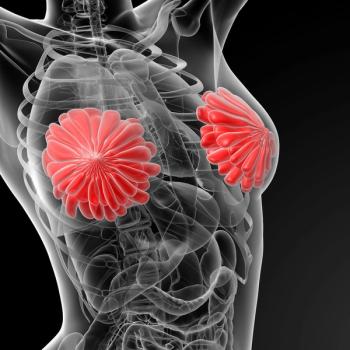
Oncology NEWS International
- Oncology NEWS International Vol 9 No 9
- Volume 9
- Issue 9
CAD Helps Radiologists ID Small Breast Cancers
ATLANTA-In a retrospective review of more than 12,000 screening mammograms, computer technology found 52% of missed cancers, Kunio Doi, PhD, reported at the Era of Hope meeting, featuring research sponsored by the US Department of Defense Breast Cancer Research Program.
ATLANTAIn a retrospective review of more than 12,000 screening mammograms, computer technology found 52% of missed cancers, Kunio Doi, PhD, reported at the Era of Hope meeting, featuring research sponsored by the US Department of Defense Breast Cancer Research Program.
Computer-aided diagnosis [CAD] cannot pick up lesions that are invisible at mammography, but it can compensate for some cases of radiologist oversight, said Dr. Doi, professor of radiology, University of Chicago. We believe the increasingly positive results with CAD demonstrate it can serve as a second opinion for traditional screening mammograms.
In this study, a CAD Prototype Intelligent Workstation, developed by Dr. Doi and his colleagues, was used to review the mammograms of more than 22,000 women who had routine screenings in the past 5 years.
Among the first 12,670 women whose charts were analyzed during the first 3 years, 79 developed breast cancer. Of these 79 cancer patients, 42 had a negative prior screening mammogram. Retrospective review of these cases showed that 19 were not visible on mammography, but of the 23 cases that had a subtle lesion visible in retrospect, the computer identified 12 of them. The CAD workstation identified 52% of these missed cancers roughly a year before they were actually detected, Dr. Doi said.
Under subcontract from the Universitys Department of Defense grant, radiologists are now using CAD as a concurrent second opinion for all screening mammograms performed at Grant Square Imaging, La Grange Memorial Hospital, Hinsdale, Illinois. The center is using the R2 Technology M1000 ImageChecker, the only CAD device FDA approved to date.
The radiologists are recording all
cases in which information from the ImageChecker results in additional patient evaluation (that is, evaluation for findings not originally perceived by the radiologist). Data analysis from that study will begin in about 2 years, Dr. Doi said.
The next challenge for CAD is diagnosis, Dr. Doi said. We have already developed algorithms that guide our system in distinguishing benign from malignant lesions. I believe that in time, as we fine-tune those algorithms, CAD will also become an important tool in helping women avoid unnecessary biopsies in addition to diagnosing more cancers.
How CAD Works
With the CAD Intelligent Workstation, a laser scanner first transforms the mammography film into a detailed matrix of digital data. Microcalcifications appear as tiny white spots, and masses appear as round or irregular shapes.
Guided by complex programming refined over many years, the systems computer vision and artificial intelligence algorithms scan the digital matrix, sift out background findings and normal soft tissue, then highlight patterns likely to represent lesions.
To detect masses, the computer looks for a deviation from the normal architectural symmetry of the right and left breasts, using a bilateral-subtraction technique.
To detect clustered microcalcifications, the digitalized mammogram is processed by a linear filter to improve the signal-to-noise ratio of microcalcifications on the image. Other techniques are then used to extract potential signal sites from the noise background and distinguish true signals from noise or artifacts.
Areas interpreted as suspicious for either masses or microcalcifications are flagged with arrows (see Figure). After reviewing the mammograms and the computer output, a radiologist prepares a report based on experienced judgment.
A service is now available to provide physicians and mammography centers worldwide with access to CAD technology. A company called iMammogram.com Inc. (Westlake Village, California) will collect and return mammographic films by bonded courier, perform the CAD analysis (which it calls CloserLook), and provide a digital archive for each patient.
The companys website, located at
The company has also signed an agreement with General Electric Medical Systems to develop a system that will allow mammography centers to transmit images to iMammograms facility electronically rather than by courier.
ONI will provide a fuller report on iMammogram.com and its teleradiology project in an upcoming issue.
Articles in this issue
over 25 years ago
Soy’s Effect on Breast Cancer Remains Uncertainover 25 years ago
STAR Enrollment Tops 6,000 in First Year of Recruitmentover 25 years ago
New rhTPO Being Tested in Three Trialsover 25 years ago
New Research Centers Target How Market Forces Affect Health Careover 25 years ago
PRIMATOM System Combines CT Scanning With Radiation TherapyNewsletter
Stay up to date on recent advances in the multidisciplinary approach to cancer.


















































































